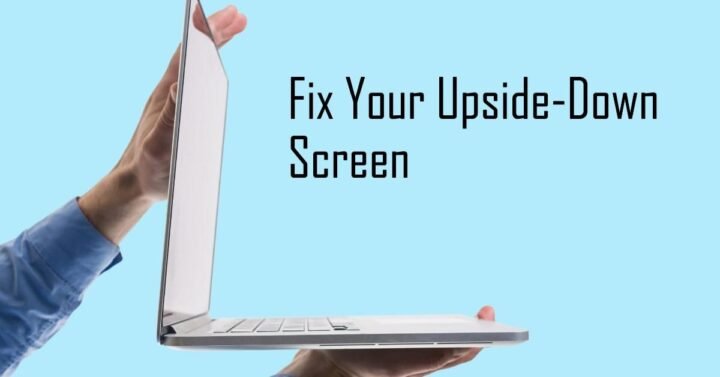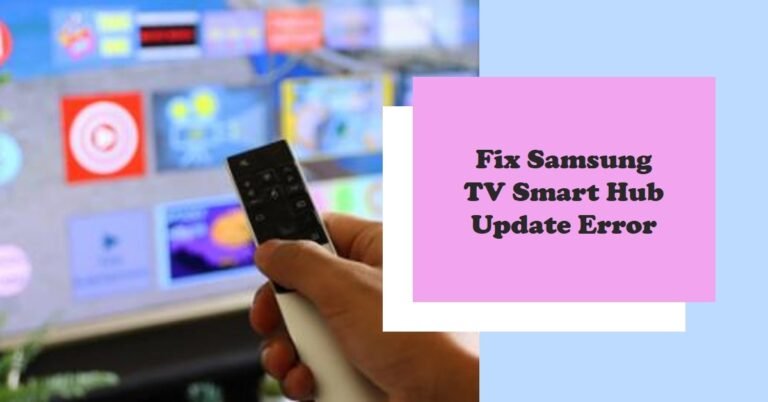How To Fix A Computer Screen That Is Upside Down Windows 7?
Hey there, fellow Windows 7 users! Have you ever experienced the sudden shock of your computer screen flipping upside down? It’s like your digital world has turned topsy-turvy! If you’re scratching your head wondering, “Why is my computer screen upside down?” and “How on earth do I fix this?”, you’ve landed in the right spot. I’m here to guide you through the simple steps to get your screen back to its normal orientation.
This frustrating issue can happen due to accidental key presses, display settings mishaps, or even outdated graphics drivers. But fear not, as there are several easy fixes that can save the day. So, let’s dive in and get your screen back on track!
Why Is My Computer Screen Upside Down?
The most common reason is accidentally pressing a combination of hotkeys – typically CTRL + ALT + an arrow key. This hotkey combo is designed to let you quickly change your screen orientation, but it can be triggered unintentionally.
Other possible culprits include outdated or faulty graphics drivers, issues with your display settings, or even malware. But before we get into the more complex scenarios, let’s try the easiest fix first: keyboard shortcuts.
How Do I Rotate My Screen Back to Normal Using Keyboard Shortcuts?
This is the simplest and often the quickest fix.
- Hold down the CTRL and ALT keys on your keyboard.
- While holding them down, press the Up Arrow key. This should immediately rotate your screen back to its normal upright position.
If the Up Arrow key doesn’t work, try the other arrow keys:
- Down Arrow: Flips the screen upside down.
- Left Arrow: Rotates the screen 90 degrees to the left.
- Right Arrow: Rotates the screen 90 degrees to the right.
Keep trying the different arrow keys until your screen is back to normal. If none of the keyboard shortcuts work, don’t worry! We’ve got other methods to try.
How Do I Change the Screen Orientation Through Display Settings?
If the keyboard shortcuts don’t do the trick, you can manually adjust the screen orientation through your display settings.
- Right-click on any empty area of your desktop.
- From the context menu, select “Screen Resolution“.
- In the Screen Resolution window, look for the “Orientation” dropdown menu.
- Select “Landscape” from the dropdown menu.
- Click “Apply” to save the changes.
- You might see a confirmation message asking if you want to keep the changes. Click “Keep changes” to confirm.
Your screen should now be back to its normal orientation. If not, let’s explore a few more troubleshooting steps.
What Should I Do If Display Settings Do Not Fix the Issue?
Check Your Graphics Properties:
Sometimes, you might need to access your graphics card’s properties to fix the orientation. You can usually do this by right-clicking on your desktop and looking for an option like “Graphics Properties” or “Graphics Options”. Once you’re in the graphics properties, look for a setting related to rotation or orientation and make sure it’s set to “Landscape” or “0 degrees”.
Check Your Graphics Driver:
An outdated or faulty graphics driver can also cause screen orientation problems. To check your graphics driver:
- Right-click on the “Start” button.
- Select “Device Manager” from the menu.
- Expand the “Display adapters” category.
- Right-click on your graphics card and select “Properties“.
- In the Properties window, go to the “Driver” tab.
- If the driver is outdated, click the “Update Driver” button.
Restart Your Computer:
Sometimes, a simple restart can fix minor glitches. Try restarting your computer and see if the screen orientation returns to normal.
If you’ve tried all of these steps and your screen is still upside down, it might be a good idea to reach out to a tech-savvy friend or a computer technician for further assistance.
How to Update Graphics Drivers to Fix Screen Orientation Issues?
Keeping your graphics drivers up to date is crucial for the smooth functioning of your computer and can often resolve display issues like an upside-down screen. Here are two methods you can use to update your graphics drivers:
Using Windows Update:
- Click the “Start” button and select “Control Panel“.
- In the Control Panel, go to “System and Security” and then “Windows Update“.
- Click “Check for updates” and let Windows search for available updates.
- If any graphics driver updates are found, install them.
Manually Downloading from the Manufacturer’s Website:
- Identify your graphics card manufacturer (e.g., NVIDIA, AMD, Intel).
- Visit the manufacturer’s website and go to the “Drivers” or “Support” section.
- Search for your specific graphics card model.
- Download the latest driver for your operating system (Windows 7).
- Run the downloaded installer to update your graphics driver.
How Can I Prevent My Screen from Flipping in the Future?
Here are a few tips to avoid accidental screen rotation:
- Disable Hotkeys: If you don’t use the screen rotation hotkeys, you can disable them. This will prevent them from being triggered accidentally.
If you rarely use screen rotation, disable the hotkeys to prevent accidental activation:
- Right-click on the desktop.
- Select “Graphics Options” and then “Hot Keys”.
- Click “Disable”.
- Check Your Keyboard: Make sure your keyboard is working properly. Sometimes, a faulty keyboard can send incorrect signals, leading to unexpected screen rotations.
- Set Up User Permissions: If you share your computer with others, consider setting up user permissions to restrict access to display settings. This will prevent unauthorized changes to the screen orientation.
Frequently Asked Questions (FAQ)
Screen upside down Windows 7 CTRL + ALT not working
If the CTRL + ALT + Arrow keys combination isn’t fixing your upside-down screen in Windows 7, it’s possible that hotkeys are disabled or not supported by your graphics driver. To resolve this, enable hotkeys through your graphics properties:
Right-click on the desktop.
Select “Graphics Options” and navigate to “Hot Keys.”
Ensure hotkeys are enabled. If not, enable them and try the shortcut again.
How to fix upside down screen on laptop
To fix an upside-down screen on a laptop, try using the keyboard shortcut CTRL + ALT + Up Arrow. If this doesn’t work, you can manually adjust the orientation through the display settings:
Right-click on the desktop and select “Screen Resolution.”
Use the “Orientation” drop-down menu to select “Landscape.”
Click “Apply” and “Keep changes”.
How to fix upside down screen Windows 10
In Windows 10, the process is similar to Windows 7:
Press CTRL + ALT + Up Arrow to reset the screen.
If the shortcut doesn’t work, right-click on the desktop and select “Display settings.”
Scroll down to the “Orientation” section and choose “Landscape.”
Click “Apply” and “Keep changes” .
How to fix upside down screen Windows 11
For Windows 11, follow these steps:
Press CTRL + ALT + Up Arrow to reset the orientation.
If the shortcut is ineffective, right-click on the desktop and select “Display settings.”
Under “Scale and layout,” find “Display orientation” and select “Landscape.”
Click “Apply” and confirm the change.
How to fix your computer screen when it goes sideways
When your screen is sideways, use CTRL + ALT + Up Arrow to reset it. If that doesn’t work, adjust the settings manually:
Right-click on the desktop and select “Screen Resolution” or “Display settings.”
Change the orientation to “Landscape.”
Click “Apply” and “Keep changes” .
How to turn computer screen upside down with keyboard
To intentionally turn your screen upside down, press CTRL + ALT + Down Arrow. This flips the screen 180 degrees. To revert it, use CTRL + ALT + Up Arrow.
How to fix sideways screen on laptop
To fix a sideways screen on your laptop:
Use CTRL + ALT + Up Arrow to reset the orientation.
Alternatively, right-click on the desktop and select “Screen Resolution” or “Display settings.”
Change the orientation to “Landscape” and apply the changes
How do I get my full screen back to normal?
To get your full screen back to normal:
Press F11 to exit full-screen mode.
If F11 doesn’t work, right-click on the desktop and select “Screen Resolution” or “Display settings.”
Ensure the resolution is set to the recommended level and the orientation is “Landscape”.
How do I get my display screen back to normal?
To restore your display screen to normal:
Right-click on the desktop and select “Screen Resolution” or “Display settings.”
Choose “Landscape” under the orientation menu and click “Apply.”
Confirm the changes to reset the screen orientation.
How to restore display settings in Windows 7?
To restore display settings in Windows 7:
Right-click on the desktop and select “Screen Resolution.”
Choose the recommended resolution and set the orientation to “Landscape.”
Click “Apply” and “Keep changes”.
How do I get my desktop back to normal mode?
To return your desktop to normal mode:
Right-click on the desktop and select “Screen Resolution.”
Set the orientation to “Landscape” and resolution to the recommended setting.
Click “Apply” and confirm the changes.
How do I get my screen out of full screen?
To exit full-screen mode, press F11. If that doesn’t work, move your mouse to the top of the screen to reveal the toolbar and click the exit full-screen button.
How to get screen size back to normal?
To get your screen size back to normal:
Right-click on the desktop and select “Screen Resolution” or “Display settings.”
Set the resolution to the recommended level.
Click “Apply” and confirm the changes.
How do I reverse full screen mode?
Press F11 to reverse full-screen mode. Alternatively, hover your mouse at the top of the screen and click the restore down button in the toolbar.
How to get computer screen back to normal size in Windows 7?
To restore the normal screen size in Windows 7:
Right-click on the desktop and select “Screen Resolution.”
Choose the recommended resolution and set the orientation to “Landscape.”
Click “Apply” and confirm the changes.
How do I fix my laptop screen back to normal?
To fix your laptop screen back to normal:
Use the keyboard shortcut CTRL + ALT + Up Arrow.
If that doesn’t work, right-click on the desktop and select “Screen Resolution” or “Display settings.”
Set the orientation to “Landscape” and resolution to the recommended level.
How do I get full screen without F11?
In some applications, you can use the Alt + Enter keyboard shortcut to toggle full-screen mode.
Conclusion
I hope this guide has helped you fix your upside-down computer screen in Windows 7. Remember, a simple keyboard shortcut, adjusting display settings, or updating your graphics driver can usually resolve this issue. If you’re still facing problems, don’t hesitate to seek help from a tech-savvy friend or a computer technician.
Keep in mind that 9jaboizgist.com.ng is your go-to resource for tech tips and tutorials. We’re always here to help you navigate the digital world with ease. If you found this guide helpful, be sure to check out our other articles for more tech solutions and troubleshooting tips!







